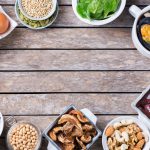14 signs you are deficient in THIS essential mineral and tips to correct the problem
 (NaturalHealth365) In today’s nutrient review, we’re talking all things iron. This mineral (with the chemical symbol Fe) is essential for human growth and development and plays a key role in your blood’s ability to carry oxygen.
(NaturalHealth365) In today’s nutrient review, we’re talking all things iron. This mineral (with the chemical symbol Fe) is essential for human growth and development and plays a key role in your blood’s ability to carry oxygen.
Are you getting enough iron in your diet to prevent deficiency and enjoy all the important health benefits this mineral has to offer?
Here’s how much of THIS important mineral you need for optimum blood and hormone health
Here’s iron’s claim to fame: it helps your body create hemoglobin.
Hemoglobin is the protein found in red blood cells that help your cells carry oxygen. Iron also helps your body create certain hormones that regulate the absorption of iron from your food.
According to the National Institutes of Health Office of Dietary Supplements, the recommended daily intake for adult men and women is 8 milligrams and 18 milligrams per day, respectively. However, certain factors, like age and pregnancy, can affect how much you need; for instance, the recommended intake of iron for women older than 50 is 8 mg, while the recommended intake for pregnant women is over three times as much at 27 mg.
Some of the best dietary sources of iron include:
- Lean meats (4 ounces of 93 percent ground beef has 2.6 mg)
- Seafood (3.5 ounces of clams—about 1 can—contains nearly 30 mg)
- Poultry (3.5 ounces of dark turkey meat contains about 1 mg)
- Nuts (plenty to choose from, but 1/2 a cup of pecans contains 1.2 mg)
- Lentils, kidney beans, peas, and white beans (3.5 oz of lentils will get you roughly 3.3 mg)
- Spinach (3.5 ounces contains 2.7 mg)
- Some dried fruits, such as raisins (keep in mind, dried fruits are notable for their high sugar content)
When it comes to getting enough iron, pay attention to other aspects of your diet, too. For example, research suggests that vitamin C helps improve iron absorption, whereas consuming dairy products may actually increase the risk of a deficiency in this nutrient, especially among infants and kids.
And yes: Cooking with a non-toxic cast iron skillet can increase iron intake.
Could you or your loved one be deficient in iron? These are 14 signs to watch out for
When you don’t get enough iron in your diet, you’re at risk for a condition called iron deficiency anemia. People with anemia don’t have enough healthy red blood cells to carry oxygen from the lungs and around the body, which can lead to a wide range of health problems, including these common warning signs:
- Fatigue
- Weakness or decreased tolerance to exercise
- Lightheadedness
- Pale skin
- Cold hands and feet
- Brittle nails
- Headache
- Chest pain
- Fast heartbeat (palpitations)
- Shortness of breath
- Sore or inflamed tongue
- Unusual cravings for non-food items like dirt, starch, or ice (called pica, this can also be caused by malnutrition and pregnancy)
- Irritability
- Poor appetite
The rates of anemia in our country tend to vary by race and gender. For example, according to the American Academy of Family Physicians, nearly 1 in 5 black or Mexican-American women have iron deficiency anemia. In contrast, the prevalence among non-Hispanic white women is closer to 12 percent and even lower (2 percent) among adult men.
Of course, the lack of iron-rich foods in their diet is a main risk factor for iron deficiency anemia. Still, not all types of anemia are directly related to iron intake, meaning there are other risk factors to be aware of. These include deficiencies in vitamin B12 and folate, advancing age, family history, gastrointestinal disorders like Crohn’s disease, menstruation, and other underlying health conditions, including kidney disease, alcohol use disorder, and diabetes.
The bottom line?
Understand your potential risk factors for anemia, always look to your diet and find where you can make improvements, and consult with a holistic healthcare provider if you have any concerning symptoms.
Sources for this article include:
NIH.gov
NIH.gov
UCLA.edu
MayoClinic.org
Berkeley.edu
AAFP.org
MayoClinic.org
Harvard.edu
Nationaleatingdisorders.org
Medscape.com



